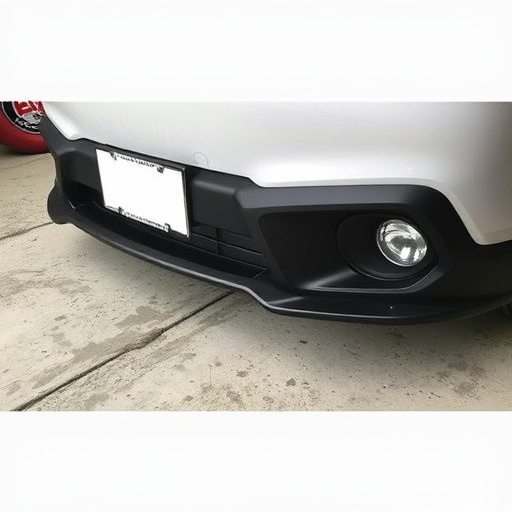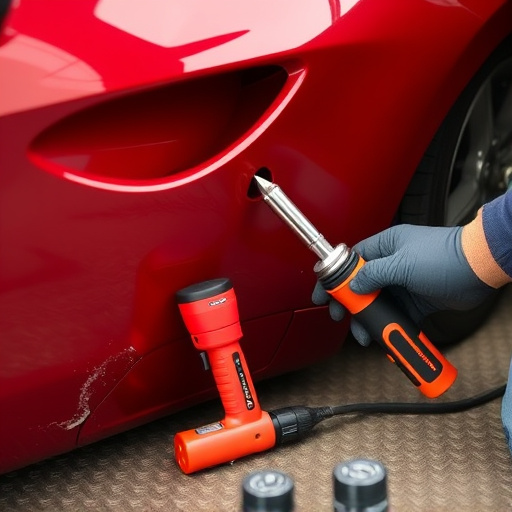Replacing a Mercedes run-flat tire requires precise steps: remove damaged tire, install new one at recommended pressure, gently lower car, and securely tighten lug nuts. Crucial final step is resetting the Tire Pressure Monitoring System (TPMS) for accurate readings and vehicle safety, per Mercedes owner manual. Professional body shops specialize in run-flat replacements, ensuring reliability and a smooth driving experience.
Discover the comprehensive guide to Mercedes run-flat tire replacement and TPMS reset. Run-flat tires are a unique feature in Mercedes vehicles, designed for safety and convenience. This article breaks down the process into simple steps, from understanding your car’s run-flat system to replacing the tire and resetting your Tire Pressure Monitoring System (TPMS). Learn how to navigate this essential maintenance task efficiently.
- Understanding Mercedes Run-Flat Tires and TPMS
- Step-by-Step Replacement Process
- Resetting Your Tire Pressure Monitoring System (TPMS) After Replacement
Understanding Mercedes Run-Flat Tires and TPMS

Mercedes Run-Flat tires are designed to maintain optimal performance and safety even after a deflation or puncture. These specialized tires are equipped with an integrated system that allows them to continue operating for a limited distance, reducing the risk of accidents caused by sudden loss of pressure. This innovative feature is particularly useful in situations where immediate tire replacement might be challenging. However, proper Mercedes run-flat tire replacement and TPMS (Tire Pressure Monitoring System) reset processes are essential to ensure the vehicle’s safety and maintain its original performance.
Understanding the TPMS is crucial in this context. It constantly monitors the air pressure in each tire and alerts the driver if there’s a significant drop, which could indicate a puncture or damage. When a Mercedes run-flat tire needs replacement, resetting the TPMS after the new tire has been installed is a critical step. This ensures that the system accurately reflects the correct pressure for the new tire, enhancing overall vehicle safety and efficiency. A visit to a professional vehicle body shop specializing in fender repair and car body restoration can make this process seamless and ensure your Mercedes continues to drive smoothly with reliable tire performance.
Step-by-Step Replacement Process

The Mercedes run-flat tire replacement process involves several meticulous steps to ensure both safety and proper functionality. First, locate and remove the damaged tire using a jack and secure it safely on the car body repair rack for easy access. Next, deflate the remaining air from the run-flat tire, typically done with a special tool designed for this purpose.
With the old tire off, proceed to install the new replacement tire, making sure it aligns correctly with the wheel hub. Inflate the new tire to the recommended pressure using a precision gauge, ensuring compliance with the vehicle’s specifications. Once inflated, carefully lower the car back to the ground and tighten the lug nuts securely but not excessively, as over-tightening can harm the car body restoration process. Finally, reset the Tire Pressure Monitoring System (TPMS) by scanning the system with a compatible tool to ensure optimal performance and safety while driving.
Resetting Your Tire Pressure Monitoring System (TPMS) After Replacement

After successfully replacing your Mercedes run-flat tire, resetting the Tire Pressure Monitoring System (TPMS) is a crucial step to ensure optimal vehicle performance and safety. This process allows the system to recalibrate itself with the new tire setup, providing accurate pressure readings. Most modern vehicles, including Mercedes models, are equipped with TPMS sensors that monitor air pressure in each tire, alerting drivers to any significant drops.
During a Mercedes run-flat tire replacement, it’s essential to reset the TPMS to maintain its functionality. This can typically be done through your vehicle’s onboard computer system. Your vehicle may have a specific procedure for this task, which often involves driving at certain speeds or activating the system in a particular way. Referring to your car owner’s manual will guide you through the correct steps for your specific Mercedes model, ensuring a seamless and safe TPMS reset process.
Replace your Mercedes run-flat tires with ease and ensure optimal safety by following this comprehensive guide. Understanding the unique features of your vehicle’s TPMS system is crucial for a successful reset after replacement. By accurately performing each step, you’ll not only enhance your driving experience but also maintain the integrity of your car’s monitoring system, making it a seamless process for even the most meticulous drivers.













